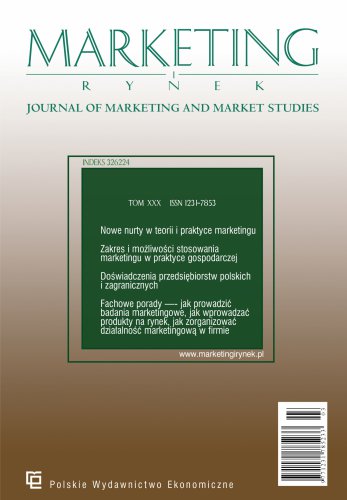The traditional food market is a promising market and its position is expected to grow over a few years to come. Traditional food is positively perceived by consumers, mainly due to its quality characteristics. A review of the literature clearly shows that belonging to a particular generation (X, Y or Z) determines, among other things, the shopping approach, the way of shopping. Consumers from Generation Z declare purchasing traditional food, but their knowledge of it is superficial. The aim of the study was to identify the sociodemographic characteristics of purchasing behaviours of Generation Z representatives in the traditional food market. A diagnostic survey was conducted among 347 representatives of Generation Z. The indirect interview technique with authors' own online survey questionnaire (CAWI) was applied. The findings of the research provided detailed information based on which the importance and influence of selected sociodemographic characteristics on the purchasing behaviours of Generation Z representatives were established. Gender, place of residence and declared lifestyle differentiated the respondents' food choices. Gender had a major influence on food choice behaviour. On the other hand, taste of the product was the most significant food choice factor. The importance of health, environmental or economic values concerning this product category should be the object of educational and promotional activities.
Rynek żywności tradycyjnej jest obiecującym rynkiem i oczekuje się, że w ciągu kilku lat jego pozycja będzie rosnąć. Żywność tradycyjna jest pozytywnie postrzegana przez konsumentów głównie ze względu na jej cechy jakościowe. Dokonany przegląd literatury wskazuje, że przynależność do konkretnego pokolenia X, Y, Z warunkuje m.in. podejście zakupowe, sposób dokonywania zakupów. Konsumenci pokolenia Z deklarują nabywanie tej kategorii żywności, jednak wiedza o niej jest powierzchowna. Celem opracowania było rozpoznanie socjodemograficznych uwarunkowań zachowań nabywczych przedstawicieli pokolenia Z na rynku żywności tradycyjnej. Przeprowadzono sondaż diagnostyczny wśród 347 przedstawicieli pokolenia Z. Zastosowano technikę wywiadów pośrednich z wykorzystaniem autorskiego kwestionariusza ankiety internetowej (CAWI). Wyniki badań dostarczyły szczegółowych informacji, na podstawie których ustalono znaczenie i wpływ wybranych cech socjodemograficznych na zachowania nabywcze przedstawicieli pokolenia Z. Płeć, miejsce zamieszkania oraz deklarowany styl życia różnicowały czynniki wyboru tej kategorii żywności. Największy wpływ na zróżnicowanie czynników wyboru, którymi kierowali się młodzi respondenci, miała płeć. Natomiast najistotniejszym czynnikiem wyboru był smak produktu. Znaczenie zarówno walorów zdrowotnych, jak i środowiskowych czy gospodarczych w odniesieniu do tej kategorii produktowej powinno być przedmiotem działań edukacyjnych i promocyjnych.
Keywords: purchasing determinants; traditional food products; sustainable product; purchasing decision; Generation Z; consumer behaviour

